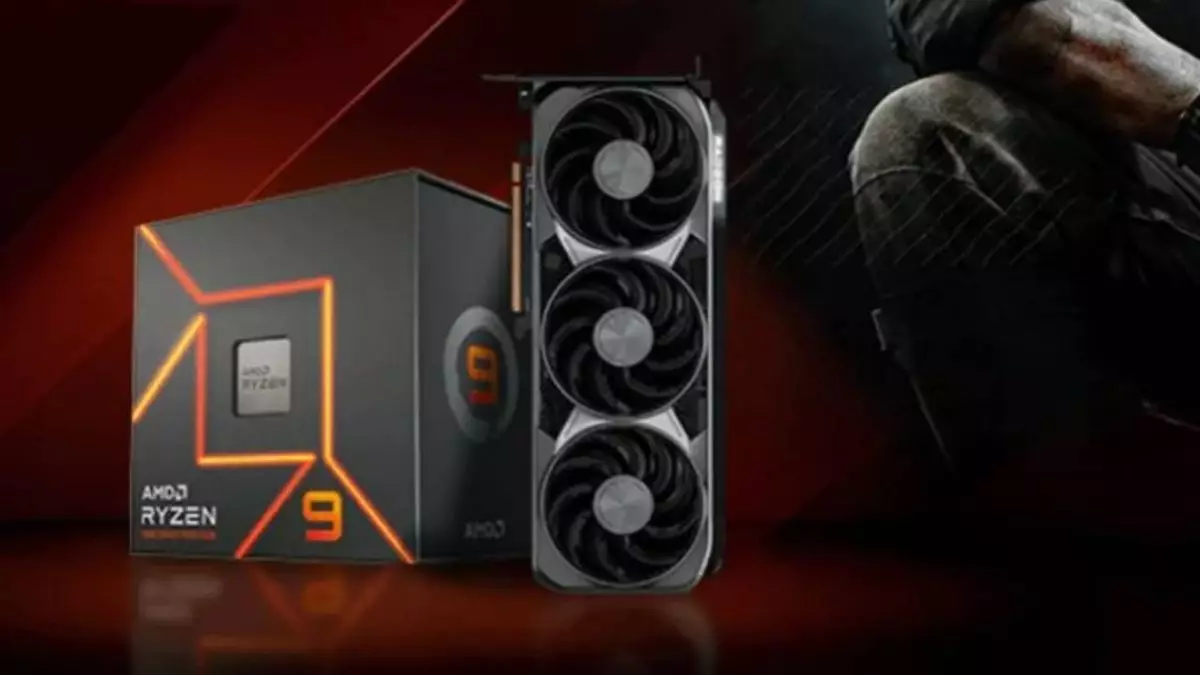As the tech world eagerly anticipates the unveiling of next-generation graphics cards at CES 2025, both Nvidia and AMD are under intense scrutiny. With speculation swirling about AMD’s RX 8000-series, new information from various leakers hints at a potential rebranding that could introduce the RX 9000-series. This article delves into the implications of these developments, what we know so far, and what they may mean for consumers and the industry.
Traditionally, AMD has followed a systematic naming convention for its graphics cards—each series bearing a consistent numerical sequence like RX 5000, 6000, and 7000. However, recent leaks suggest a shift in this pattern. According to industry insiders, the upcoming offerings may be designated as the RX 9070 and RX 9070 XT, indicative of a leap to the RX 9000-series. This departure from the expected RX 8000-series may be reflective of a more significant redesign and capabilities, aligning with the shifts in their CPU product line which is also adopting the 9000-series labeling.
The speculation is further fueled by leaked retailer listings showcasing the RX 9070 and RX 9070 XT stationed prominently above the current top-performing RX 7900 XTX. This could signify not just an incremental upgrade, but a more substantial evolution in AMD’s graphical capabilities. Such a move would represent AMD’s ambition to streamline its product offerings, possibly enhancing consumer recognition and model differentiation.
Deciphering Leaks: The Role of Social Media and Industry Insiders
The proliferation of social media and forums has changed how insider information is disseminated, with platforms like X (formerly Twitter) and Reddit becoming hotbeds for leaks. Recently, notable leakers—momomo_us, All The Watts!, and HXL—converged around a new naming convention that distinguishes the RDNA 3.5 and RDNA 4 architectures. These insights suggest AMD is strategically positioning its products to communicate a clearer generational leap in technology.
Moreover, the introduction of a third tier, presumably working under the RDNA 4 framework, suggests a more nuanced segmentation of GPU capabilities. Notably, these architecture upgrades claim to provide significant improvements, particularly in ray tracing performance. For instance, preliminary reports hint that the RX 9070 XT could outperform the RX 7900 XTX in ray tracing by as much as 45%, bringing AMD into closer contention with Nvidia’s offerings.
A Reddit user recently sparked excitement by sharing what appears to be an early promotional image of the RX 9070 XT. The graphic features a striking black and silver cooler design that is said to represent a departure from previous AMD models. The visual aesthetics promise to signal a modern interpretation of AMD’s design philosophy, potentially appealing to gamers and professionals alike.
However, despite these teasers, it’s crucial not to read too deeply into these early revelations. Recent leaks have shown that many new products often disappoint when the curtain is pulled back. While a three-fan setup might seem standard, it will be the underlying architecture and performance enhancements that dictate whether this new model will resonate with the market.
The impending arrival of AMD’s RDNA 4 architecture raises questions about how it will stack up against Nvidia’s next-generation technology. AMD has publicly stated that its new GPUs won’t target the top-tier market, which raises expectations that these cards may focus on offering high performance at a more accessible price point.
Given that AMD’s FidelityFX Super Resolution (FSR) technology is rumored to receive improvements via AI enhancements akin to Nvidia’s DLSS, there could be a strategic opportunity for AMD to engage with a wider audience—especially gamers looking for budget options that still deliver top-notch performance.
Ultimately, while the notion of entering a new series raises excitement, consumers must temper their expectations until official announcements are made at CES 2025. The speculation surrounding performance metrics and pricing will only reach clarity with the eventual product unveiling.
As we stand on the precipice of a new era in GPU development, the conjectures surrounding AMD’s RX 9000-series and the competitive landscape with Nvidia are poised for significant shifts. While the leaks provide tantalizing glimpses, they must be approached with caution. The real test will unfold at CES 2025, where both companies will have the opportunity to set the stage for their technological advancements and redefine their market strategies. Until then, enthusiasts and consumers will have to wait in anticipation, armed with their own hopes and expectations for the future of gaming graphics.

